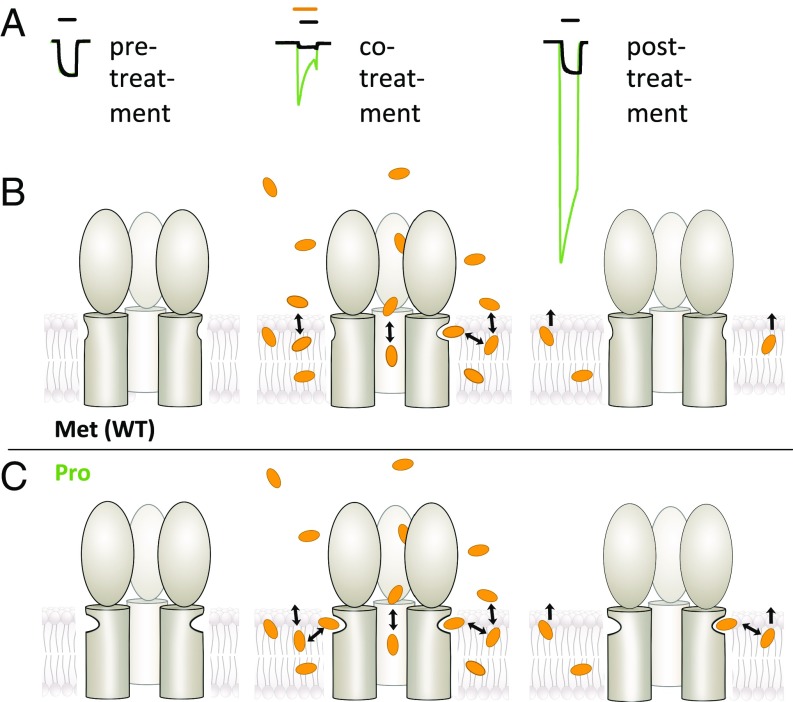Fig. 5.
Model for differential PFL modulation in intrasubunit variants of a model pLGIC. (A) Overlaid sample traces for GLIC WT (black) and Pro-205 (green) as in Fig. 4. (B) In the absence of PFL (Left), intrasubunit cavities in WT GLIC (Met-205) are largely contracted. These cavities must expand to bind PFL (Center), resulting in relatively little current enhancement, while the dominant effect is inhibition via pore binding. Washout (Right) removes PFL from the aqueous-accessible pore; intrasubunit sites contract upon unbinding, lowering their affinity and rendering them insensitive to residual PFL in the membrane. (C) In GLIC Pro-205 and related variants, intrasubunit cavities are relatively deep even in the absence of PFL (Left). Upon cotreatment (Center), PFL can bind with little cavity expansion, producing potentiation only partly compensated by inhibitory binding in the pore. After washout (Right), high-affinity intrasubunit cavities may still bind residual PFL in the membrane, producing potentiation unopposed by inhibition. In B and C, three subunits of GLIC are represented as in Fig. 1A.

